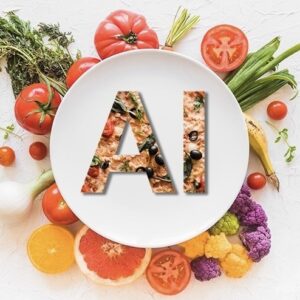
This alarming claim raises questions about the food quality and quantity. However, WHO states that it is more about the polarity of the resources. Most of the countries with high resources end up dumping the excess food while the rest of the world has to starve.
Almost one-third of the world’s population goes to sleep hungry. On the contrary, on third of all the food ever produced ends up in waste. This sharp contradiction means even with all the technological advancement, we have somehow failed to handle the food that we are producing.
Experts believe that rather than looking at ways to handle food waste, it is better to work on the quality of the food. This will eventually help in making food tastier, healthier, and fortified of all the essential nutrients.
Most of the AI-based technologies fetch data in real-time and rely on it directly to the designated institute. This eventually helps with the overall monitoring and storing of food even when people are away. From the industrial scale all the way to the personal level, you will see the incorporation of AI in improving food quality and its shelf life.
These gadgets are simple to install and require just a good internet connection like Optimum Internet. The best thing about these tech gadgets is that they can be used on urban gardening levels all the way to big cultivating lands, so there is no discrimination based on their capacity.
Top 5 Ways AI Is Helping With Food Quality And Taste
1. Crop Monitoring
Crop monitoring has been the bane of every farmer’s existence. Experts believe that better monitoring of crops will help reduce the risk of any possible disease that may take place or affect the crops later. Most of the diseases have symptoms that can only be analyzed with close monitoring but for small farmers and cultivators, this means dedicating resources, which will eventually affect the production cost of the crop.
With the help of an automated monitoring system, farmers do not have to waste resources or money just for monitoring, rather this will be completely automated. Tech gadgets like drones, soil quality checkers, and crop assessors can help in improving the quality and quantity of production.
2. Production Estimate
Production estimate has always been one of the biggest issues because seasonal changes, quality of seed, soil quality, and even the water and use of fertilizers impact the taste and quality of food. While most farmers have been estimating the production based on the overall area of land, others have been using a ballpark figure for the production forecast.
However, these estimates are never accurate which eventually reflects on the annual pricing of the crop. This unpredictability has long been affecting the compensation and strip them of their bargaining rights. With automated methods, production estimates can be more accurate which eventually consumers in better food selection and motivates the farmers to improve the production quality of food.
3. Fortification of Food
Most of the food that we eat today has been fortified to meet our daily nutrition needs. This has long been one of the biggest issues because of the natural species’ properties. However, with the help of AI, food can now be fortified during its production so it can fulfill all the essential calories and nutrition needs of the consumer. Moreover, fortification of food in the initial stage can also help in improving its taste and work as a natural flavor enhancer.
4. Food Waste Reduction
Based on the recent states released by WHO, food waste is generally associated with postproduction. However, this is just one factor. In some cases, food might even go to waste during the production process. Insect attacks, weather changes, or production issues in the case of food preparation in food companies are some of the main factors.
With the help of automation and AI, food waste can now be reduced at both pre and post-production levels. Now, food is stored based on their Ph. level, optimum temperature needs and other properties so, the shelf life of food is much better.
5. Supply Chain Management
Supply chain management in the case of food is a delicate business because food comes under perishable goods. One wrong move, one bad food storage strategy, or a delay in supply can cause major losses. By using an automated supply chain management system farmers, food production companies and consumers get the best and fresh food without risking any food waste.
Bottom Line
Simply put, AI is not just limited to improving the production quality of food but also it helps in improving the shelf life of food, which eventually helps with food waste. The above-mentioned factors include all the important ways AI is helping with food quality.